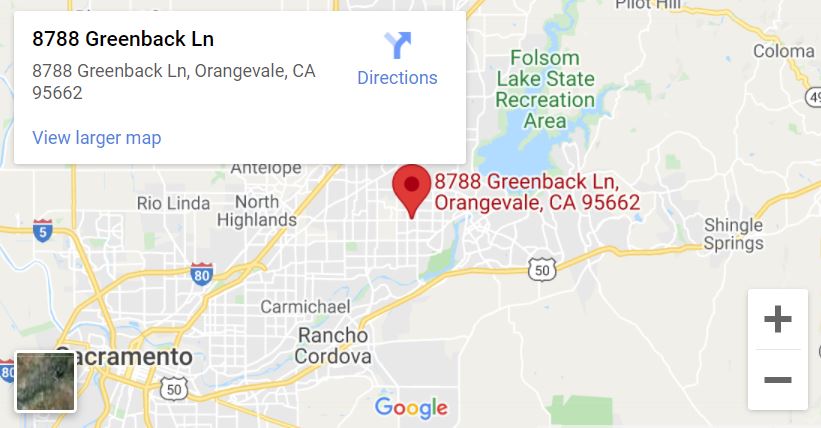
If you live in Fulton County, FL, you are likely aware of the need for grease traps. However, you might not be aware of the rules and regulations regarding grease traps. If this is the case, you should read up on the local municipal code to learn more about the rules and regulations. FSE wastewater rules (which includes FOG disposal) are also covered by the code. It can be overwhelming to wade through hundreds of pages worth of legalese. Fortunately, there is help available, including this helpful guide.
Rules and regulations
It's possible that you don't know the rules for grease traps within Fulton County, Georgia. While it's important to follow the rules to avoid fines and possible legal issues, you don't want to break them yourself. Fulton County requires grease traps be inspected every year. There are also specific cleaning times that will apply depending on the trap's size. You don't need to know what these rules mean for you business. Continue reading to find out.
There is a specific rule that applies to commercial car washes. To prevent FOG from escaping into the city's sewers, they must use a grease trap. Commercial car and truck wash facilities must use a grease trap and an oil separator according to the rules. They should also have a grit-removal system. If you don't have these rules, you can use the alternative pretreatment methods.

Inspection requirements
Fulton County, Georgia has a one-year inspection of grease traps. The County has a 25% rule for determining grease trap cleanliness. The inspection is also scheduled on dates that depend on the size and type grease traps your business uses. Fulton County requires that grease trap servicers and FOG waste carriers provide the County with manifests in order to comply with grease trap inspection regulations.
In order to avoid violating Fulton County grease trap regulations, you should clean your grease trap at least once a year. The underground grease trap houses food wastes that are emptied from kitchens. It should not be used in dumpsters, garbage disposals. Different types of food facilities have different disposal requirements. As well as grease traps, commercial pretreatment systems are required for microbreweries.
Service charges
Fulton County is an expert in the maintenance and cleaning of grease traps. Highways & Facilities Department tacked on several cleaning expenses this fiscal year to cover COVID cleanup. This cost was partly covered by an amendment in the county's budget for 2021. Highways & Facilities Department continues its weekly COVID cleaning at Fulton County Complex I & II. Midday cleaning of the County Office Building will continue until the end, at $200.
Grease is messy and can also be dangerous. Grease can lead to accidents and plumbing back ups, in addition to making the environment unhealthy. A grease trap service is often much cheaper than fines or other consequences. So what can you expect of a service provider? Read on to find out more. Employing a fulton County grease trap services has numerous benefits.

Grease trap location
Your Atlanta grease trap location is crucial to your plumber. A trap is a device that captures grease from sewage and allows it to be skimmed for disposal. If your trap is located in an easy-to-reach location, you will be charged less for servicing it. To clean a trap that is difficult to reach, extra compensation will be needed.
It is essential to use a grease trap if your commercial establishment produces grease or fats. This will prevent the grease from entering the sanitary sewage system. This system can't handle large quantities of grease. Therefore, a grease trap will isolate the grease and prevent it from being deposited into the public sewage system. It is important to clean your trap regularly because the grease cannot drain on its own. Make sure to clean your grease trap at the very least once a weekly in order to avoid getting fined.
FAQ
Can a handyman install new appliances or fixtures?
These types of projects can be done by a handyman. Before you start installing any appliance or fixture, make sure you have the right information.
How many hours is it typical to complete a DIY project of this nature?
The average DIY project takes two to four hours. The complexity and difficulty levels of the project determine the length.
What qualifications are necessary to be a handyman
A handyman's most important attribute is patience. Additionally, you should have knowledge of plumbing, electrical systems, and carpentry.
It is likely that you will find many jobs for people who have the right qualifications. But if you don’t, you may not be qualified.
A school that specializes is a good place to start your training.
What are the most popular handyman repairs?
Handymen can repair damaged roofs or windows, doors and gutters. When it comes to building or home improvement projects that cannot be performed by DIY homeowners, handymen can help with carpentry, plumbing, painting, drywall installation, landscaping, concrete work, fence construction, decking, tiling, and more.
Is it necessary to train a handyman for my work?
No. Handymen already possess the knowledge and skills to complete any project. You just need to give them the materials they require to complete the job.
Is there anything I should look out for before hiring a handyman?
You will want to make sure you hire someone who has experience with your type of project. Also, make sure to get references and ask about customers who have used your services before. You might also consider including some extra money for unexpected expenses. It's important to check that your dog is licensed and insured.
Statistics
- A franchise was approximately $110,000 with a franchise fee of $14,900, according to a spokesperson for a national handyman franchise. (en.wikipedia.org)
- With a strong housing market, the handyman and general maintenance worker industry are expected to grow by nearly 10% in the next decade. (housecallpro.com)
- More than 20% of homes in America have outdoor living spaces, including decks and patios. (mrhandyman.com)
- Mila keeps a commission of 20% for each completed service performed by Friends and charges various service fees regarding work done by Pros. (appjobs.com)
- “Before the pandemic, 40% of people asked how we could estimate a job when we weren't there,” Rose recalled. (inquirer.com)
External Links
How To
How to Replace Broken Tiles
Step 1 - Remove the old tiles.
Removing the tiles from your flooring is a good idea. These tiles will be useful later on, so you'll need to keep them intact. To avoid any problems with replacements, take note of the pieces that have been damaged or lost.
Step 2 – Choose New Tiles
Here are some options for tile repair.
-
Find a tile that is identical to the one you are removing.
-
To find the matching piece, use the measurements that you took while removing the tile. This allows you to easily find the perfect size without needing to measure again.
-
You should look for different colors, patterns and textures.
-
Consider what grout you prefer to use. Some people prefer solid color; others enjoy mixing it up.
-
Be sure to select a tile that is resistant against moisture.
-
Finally, consider the placement of your new tile -- you can save time and money by ensuring the area you're installing it in has enough space for proper installation.
-
Once you've picked your tile, place an order online or call your local Lowe's location to place it.
Step 3 Install the new tiles.
Install your tiles using the same method you used before. It is important to align them correctly so they fit together properly.
Step 4 – Clean up
Before putting down the final layer of protective material, clean up all the debris from the floor.
This will keep dust and dirt from getting into the grout between tiles, which could lead to mold.
Step 5 – Sand down the floor
After cleaning everything, sand down the floor to remove any loose particles left behind by the previous step.
Step 6 - Finish Off
After the floor has been smoothed, you can apply protective coatings to the tiles. It's important to wait until this point because wet paint can stain the surface of the new tiles.
For stain protection, you can always use a product called "damp&dry" to clean your floors.
However, it won't cover every possible problem that may occur after you've installed your new tiles. If you have children, an anti-slip coating may be a good idea.
Remember to let the protective sealer remain on for several additional weeks before you move into your home.